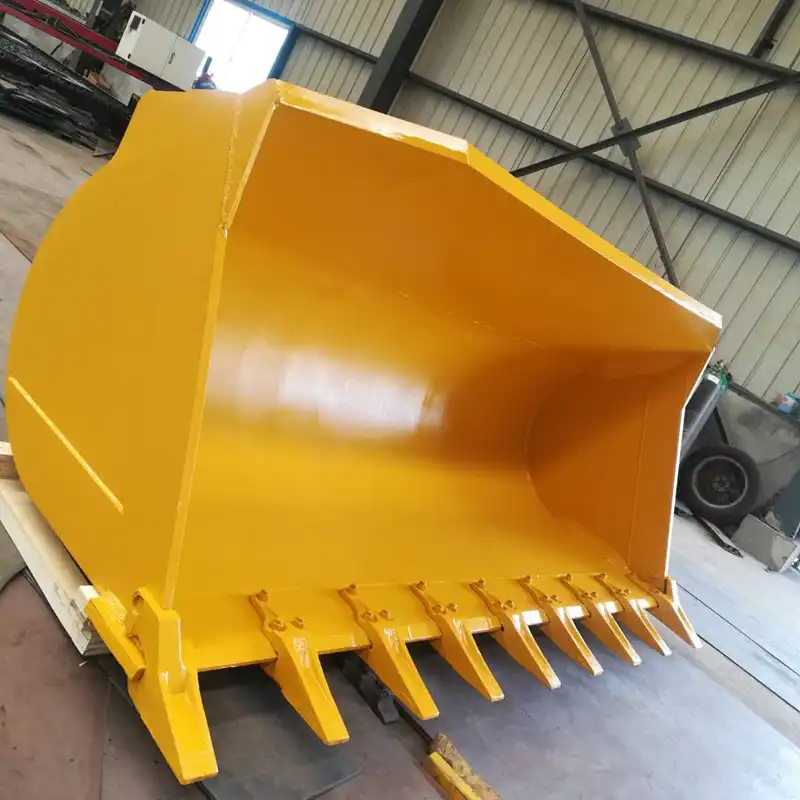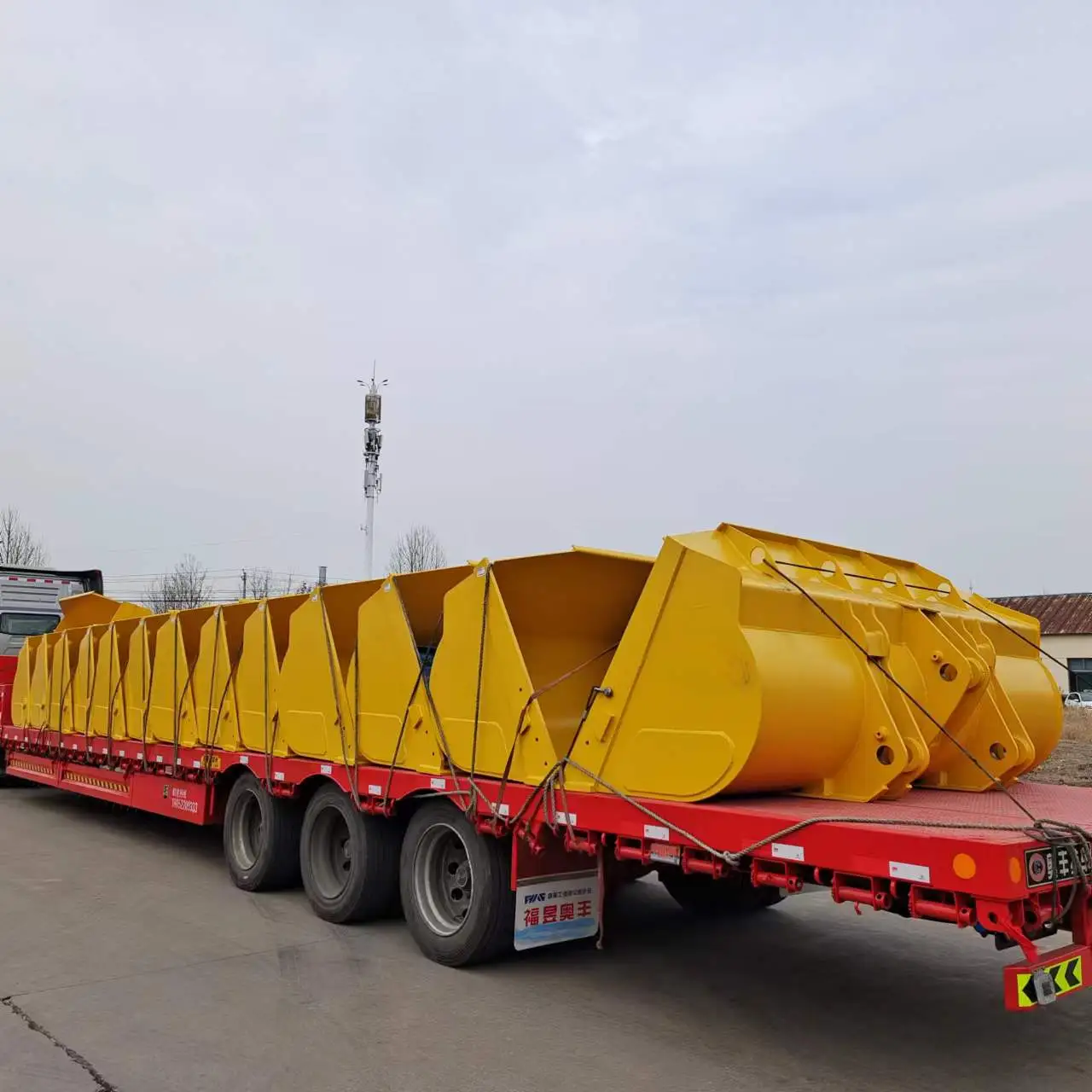What is the area of a front loader bucket hold?
The area of a front loader bucket typically ranges from 1.5 to 3.5 square meters, depending on the machine's size and intended application. This measurement represents the cross-sectional area of the bucket opening, which directly influences material handling capacity and operational efficiency. For construction professionals, mining operators, and equipment managers, understanding bucket area specifications becomes crucial when selecting the right loader for specific tasks. The bucket area combines width, depth, and height dimensions to create the total holding space, with standard measurements varying significantly across different loader categories. Professional equipment like that manufactured by TianNuo Machinery features precisely engineered bucket areas that maximize productivity while maintaining structural integrity. Whether you're handling soil excavation, material transport, or debris removal, the bucket area determines how much material you can move per cycle, directly impacting project timelines and operational costs.

Capacity Specifications
Standard Bucket Dimensions
Equipment specifications reveal that bucket areas vary considerably across different loader classes. Compact loaders typically feature bucket areas between 1.2 to 2.0 square meters, while medium-sized units range from 2.0 to 2.8 square meters. Large-scale loaders often exceed 3.0 square meters in bucket area, accommodating heavy-duty applications in mining and major construction projects.
The relationship between bucket width and depth creates the fundamental area calculation. Most front loader bucket designs incorporate a trapezoidal or rectangular cross-section, with width measurements spanning from 1.8 to 2.5 meters on standard units. Depth specifications typically range between 0.8 to 1.4 meters, creating optimal material retention while maintaining structural strength.
Volume Capacity Correlation
Bucket area directly correlates with volumetric capacity, though the relationship involves additional factors like sidewall height and cutting edge design. A 2.2 square meter bucket area might accommodate 2.5 to 3.2 cubic meters of material, depending on these geometric variables. Professional operators recognize that maximizing bucket area doesn't always translate to optimal performance, as material density and handling characteristics influence actual productivity.
Construction teams working with different materials discover that bucket area effectiveness varies significantly. Loose soil utilizes the full area potential, while dense aggregates or rocky materials may not completely fill the available space. Understanding these nuances helps equipment managers select appropriate bucket configurations for specific project requirements.
Engineering Specifications
Manufacturers engineer bucket areas considering multiple performance factors beyond simple material capacity. Structural stress distribution, hydraulic system compatibility, and operator visibility requirements all influence final area specifications. Advanced bucket designs incorporate reinforcement patterns that maintain large areas while ensuring durability under demanding operational conditions.
Professional-grade equipment features bucket areas optimized for specific industry applications. Railway maintenance equipment requires different area specifications compared to general construction loaders, reflecting the specialized material handling requirements in each sector. These engineering considerations ensure that bucket area specifications align with intended operational environments.

Relationship Between Capacity and Area
Mathematical Calculations
Calculating effective bucket area involves geometric principles that account for the three-dimensional nature of material handling. The basic area calculation multiplies width by depth, but practical applications require additional considerations for sidewall angles, cutting edge geometry, and material spillage factors. Professional equipment operators use correction factors ranging from 0.85 to 0.95 to account for these real-world variables.
Engineering specifications demonstrate that bucket area efficiency depends on material characteristics and loading techniques. Dense materials like gravel or crushed stone may only utilize 75-80% of the theoretical bucket area, while lighter materials such as mulch or topsoil can achieve 90-95% area utilization. These variations significantly impact productivity calculations and project planning.
Operational Efficiency Factors
The relationship between bucket area and operational efficiency extends beyond simple capacity measurements. Larger bucket areas generally reduce cycle times by moving more material per operation, but they also increase fuel consumption and mechanical stress on the loader. Experienced operators balance these factors based on specific job site conditions and material characteristics.
Professional construction teams recognize that optimal front loader bucket area selection depends on multiple operational variables. Job site accessibility, material transport distances, and dump height requirements all influence the practical effectiveness of different bucket area specifications. Understanding these relationships helps equipment managers maximize productivity while controlling operational costs.
Performance Optimization
Maximizing bucket area effectiveness requires careful consideration of loading techniques and material handling strategies. Experienced operators develop techniques that fully utilize available bucket area while maintaining safe operational practices. These methods include proper approach angles, controlled loading speeds, and systematic material placement within the bucket.
Equipment maintenance plays a crucial role in maintaining optimal bucket area performance. Worn cutting edges, damaged sidewalls, or structural deformation can significantly reduce effective bucket area, impacting overall productivity. Regular inspection and maintenance programs ensure that bucket areas continue performing at designed specifications throughout the equipment lifecycle.
Key Takeaway
Selection Criteria
Selecting appropriate bucket area specifications requires comprehensive analysis of project requirements, material characteristics, and operational constraints. Construction professionals must evaluate factors including material density, handling frequency, transport distances, and job site accessibility when determining optimal bucket area requirements. These considerations ensure that equipment selection aligns with specific operational needs.
Professional equipment like TianNuo Machinery's front loader bucket systems offer various area specifications designed for different applications. Railway construction projects may require specialized bucket areas optimized for ballast handling, while general construction applications benefit from versatile area configurations that accommodate diverse materials. Understanding these application-specific requirements guides effective equipment selection.
Cost-Benefit Analysis
Bucket area specifications directly impact operational economics through productivity rates, fuel consumption, and equipment wear patterns. Larger bucket areas typically increase initial equipment costs but may provide long-term savings through improved productivity. Professional equipment managers conduct detailed cost-benefit analyses considering factors such as project duration, material volumes, and operational efficiency requirements.
Investment in appropriate bucket area specifications pays dividends through improved project timelines and reduced operational costs. Equipment with properly sized bucket areas reduces cycle times, minimizes fuel consumption per unit of material moved, and decreases mechanical stress on loader components. These benefits accumulate over time, justifying initial investment in quality equipment with optimal area specifications.
Future Considerations
Evolving construction techniques and material handling requirements continue influencing bucket area design trends. Modern equipment incorporates advanced materials and engineering techniques that enable larger bucket areas without proportional weight increases. These developments provide operators with improved productivity potential while maintaining equipment durability and operational safety.
Professional equipment manufacturers like TianNuo Machinery continuously refine bucket area specifications based on industry feedback and technological advances. These improvements ensure that front loader bucket systems meet evolving operational requirements while maintaining the reliability and performance standards demanded by professional construction, mining, and infrastructure maintenance applications.
FAQ
①How do I calculate the area of my loader bucket?
Measure the bucket width and multiply by the depth to get the basic area. For trapezoidal buckets, use the formula: Area = (top width + bottom width) ÷ 2 × depth. Professional measurements should account for cutting edge geometry and sidewall angles.
②What bucket area is best for construction work?
Construction applications typically benefit from bucket areas between 2.0 to 2.8 square meters, providing good balance between capacity and maneuverability. Specific requirements depend on material types and job site conditions.
③Does larger bucket area always mean better performance?
Not necessarily. While larger areas move more material per cycle, they also increase fuel consumption and may reduce maneuverability in confined spaces. Optimal performance requires matching bucket area to specific operational requirements.
④How does material type affect bucket area utilization?
Dense materials like gravel typically utilize 75-80% of bucket area, while lighter materials such as mulch can achieve 90-95% utilization. Material characteristics significantly impact effective capacity calculations.
⑤What maintenance affects bucket area performance?
Regular inspection of cutting edges, sidewalls, and structural components maintains optimal bucket area effectiveness. Worn or damaged components can reduce effective area and impact overall productivity.
TianNuo's Front Loader Bucket Solutions
TianNuo Machinery offers professionally engineered loader buckets designed for optimal area utilization and operational efficiency. Our bucket systems feature carefully calculated area specifications that maximize productivity while ensuring structural durability. With bucket capacities ranging from compact applications to heavy-duty mining operations, TianNuo's equipment delivers reliable performance across diverse operational environments.
Our engineering team designs bucket areas that balance capacity, maneuverability, and operational efficiency based on specific industry requirements. Whether you're involved in railway maintenance, construction, mining, or material handling operations, TianNuo's bucket solutions provide the area specifications needed for optimal performance. Professional consultation ensures proper equipment selection for your specific operational requirements.
Understanding bucket area specifications becomes crucial for equipment managers seeking to optimize operational efficiency and control costs. TianNuo Machinery's comprehensive approach to bucket design considers all factors affecting area utilization, from material characteristics to operational environments. This attention to detail ensures that our equipment delivers consistent performance and reliability in demanding professional applications.
Professional equipment selection requires careful consideration of bucket area specifications and their impact on operational efficiency. Understanding the relationship between bucket area, material capacity, and productivity helps construction professionals, mining operators, and equipment managers make informed decisions that optimize project outcomes. TianNuo Machinery's commitment to engineering excellence ensures that our front loader bucket systems deliver the area specifications and performance reliability demanded by professional applications across diverse industry sectors. For comprehensive information about our bucket area specifications and professional consultation regarding your specific equipment requirements, contact our technical team at arm@stnd-machinery.com.
References
- Construction Equipment Engineering Handbook: Loader Bucket Design and Capacity Specifications, 2023 Edition
- Heavy Machinery Performance Standards: Front Loader Bucket Area Calculations and Operational Efficiency, Professional Engineering Review
- Mining Equipment Technical Manual: Bucket Capacity and Area Utilization in Heavy-Duty Applications, Industrial Machinery Press
- Construction Machinery Design Principles: Optimal Bucket Area Selection for Material Handling Operations, Engineering Technical Journal
- Heavy Equipment Specifications Guide: Front Loader Bucket Area Standards and Performance Metrics, Professional Equipment Association
About Author: Arm
Arm is a leading expert in the field of specialized construction and railway maintenance equipment, working at Tiannuo Company.

